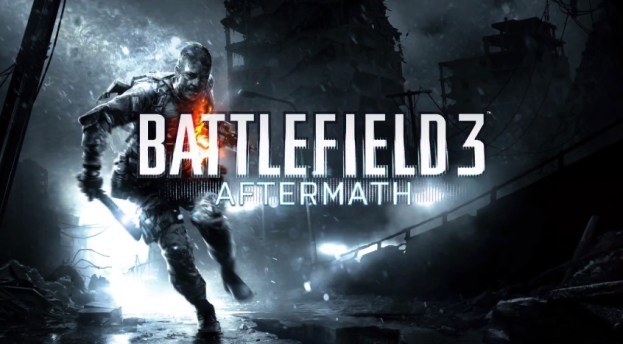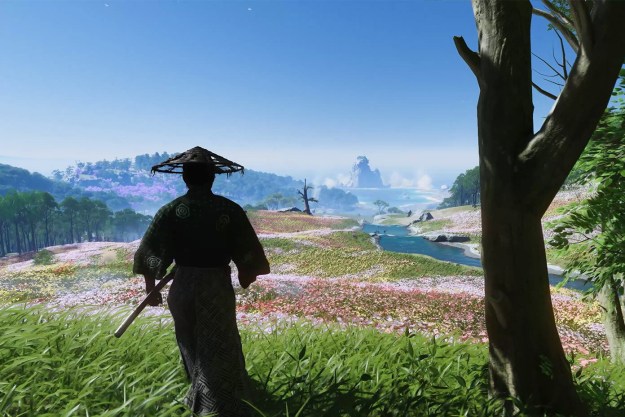 More than a year after the release of Battlefield 3, EA and DICE are still putting in work, son. Aftermath, the fourth of five promised DLCs, has been released for premium players on PS3, Xbox 360, and PC, and all BF3 owners will soon get the chance to purchase it for $9.99.
More than a year after the release of Battlefield 3, EA and DICE are still putting in work, son. Aftermath, the fourth of five promised DLCs, has been released for premium players on PS3, Xbox 360, and PC, and all BF3 owners will soon get the chance to purchase it for $9.99.
If you are a Premium member, the question of whether or not you’ll get Aftermath is a non-issue. You’ve already paid for it as part of the Premium fee, so unless you have some weird moral objection to the DLC, then there is no reason not to download the whopping 1.7 GB expansion. For those looking to purchase a la carte, the Aftermath DLC offers a lot of great content, but nothing that will blow you away.

The devastated locales all offer plenty of room to maneuver, and a lot to look at, but the torn and mauled streets are more than decorative, they are functional. Fissures in the ground lead to slightly covered paths, while once secure buildings now offer multi-level combat options. As always, the maps will take time to learn, and not just the pathways, but the limitations. Go easy on the first person you see futility trying to jump up what looks like a ramp of granite, but in truth is an impassible collection of rock that acts like a Siren, there to lure gamers to their deaths by leaving them frustrated and defenseless, jumping against what looks like a stairway, but is essentially a wall.
The same is true of the rubble. With no smooth surfaces, you’ll need to learn through experimentation what you can exploit, and where you can go. It is simply a technical limitation. This is more of an issue in some maps than others.
Epicentre is a traditional Battlefield 3 level, with sprawling cityscapes, and plenty of opportunities to get into ranged combat while capturing points or hunting enemies. It is nowhere close to being the largest BF3 level, but it feels right at home with the previously released maps – to a fault. There is very little to make this map stand out. That isn’t necessarily a bad thing when you include this map in a rotation, but it doesn’t exactly feel fresh either.
Where it succeeds though, is the way it funnels you into combat without your realizing that you are being herded. It is a big map, but the design is such that you’ll quickly find your way to enemies. This is credit to the design.
Markaz Monolith feels the least like a traditional Battlefield board, and more like a traditional shooter map. It offers a more confined zone with plenty of obviously placed cover to protect you from the vehicles – especially the helicopters, which can get you anywhere.

Talah Market is the most urban of the maps, with several multi-storied structures and commercial buildings that allow you to take the fight in a vertical direction. The vehicles have a tough time here because of that, and the rubble fools you into thinking you have plenty of cover, when in reality this might be the map you will need to move the most on to avoid being caught from the side.
The map is huge, but also well contained. You may run into enemies every time you spawn, or you may take a different path and wonder where everyone is. This one feels like the most traditional map of the four, which means it will be a great addition to playlists, but it doesn’t really stand out.
Azadi Palace may be the best of the bunch, with a massive map that pulls players into the center to battle in and around a two story building with multiple means of reaching the upper level. Smaller vehicles can also wreak havoc here, but a decent sniper can find a dark corner and end the threat by popping the driver before the vehicle finds the stairs and all hell breaks loose.
The map also features massive amounts of rubble and broken buildings, which give you plenty of places to fight it out, as long as you are willing to constantly be moving. This map has personality, and feels like the most unique of the bunch.
Scavenger is a fun new game mode, but it is a fleeting one as well. You begin with only a handgun – no primary weapons, gadgets, or explosives. Scattered throughout the maps are weapons you can snag that are randomly placed and ranked by levels, the higher the level the more powerful the weapon. Your goal – beyond the constant goal of widow making – is to wrest control of flags scattered about the map. Unlike conquest, these flags take only a few seconds to release from enemy control and take for your team, allowing them to constantly change hands while scoring you big points. All four of the maps work well enough on the standard conquest and rush games, and deathmatch is fine anywhere. All four are also designed for play with the scavenger mode, which makes its debut in Aftermath.
This is the most chaotic and frantic mode Battlefield offers. The urge to rush into the field and find a weapon or take a flag will constantly lead to massive firefights with most players using only a handgun, forcing them to get up close and personal. It’s also a good equalizer, as higher ranked players won’t be able to benefit from their unlocked weapons and perks.

The round ends when one team’s tickets are exhausted, and that generally happens very quickly. Matches that last more than five minutes are rare. Battlefield purists may dismiss this mode as an anomaly compared to the other modes, and they won’t be wrong. Scavenger is, however, a nice change of pace, even if it isn’t a mode that will be much more than an occasional palette clenser. With the quick kills and balanced teams, plus plenty of easy to capture flags, it also makes for an excellent mode to level up in, especially if there is a class where you don’t like the early weapons but want to play it to unlock the later tiers. You may not like sniping with the recon class, for example, but you can quickly level the class up without having to snipe at all. Of course, it won’t help you unlock weapon attachments.
Premium members will no doubt happily include the new maps and scavenger game mode into their rotation, even though the new areas will probably be lost among the other, superior map offerings previously released. For everyone else, the choice is simply down to how much you like BF3. Gamers on the fence won’t miss out on anything amazing by skipping Aftermath, but they probably won’t regret it either. All-in-all it’s forgettable content, but it isn’t bad for $9.99. The new vehicles are fine, but best suited for the new maps and not necessarily the previous boards, and the crossbow is a fun gimmick, but not a serious replacement weapon.
Battlefield 3’s most recent DLC won’t change anyone’s mind about the game, but it should be enough content to keep things fresh until the final promised DLC, End Game, is released in March of next year. Non-Premium PS3 fans will be able to decide for themselves on December 11, while Xbox 360 users will receive the option to buy Aftermath on December 18.


